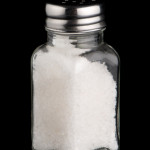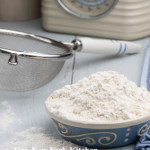Sometimes I Just Get In An Uncontrollable Baking Mood. Baking Brownies Is One Of My Favorite Things To Do.
It’s that magical time of year when Mother Nature reinvents herself. I love watching everything come to life after a long winter. Spring is also the time when people take a look at their homes and decide to tackle long delayed projects. Wouldn’t it be nice to have the inside of your home bloom along with the outside? Most of us feel overwhelmed when we look at a large project that we just can’t get started. Here are some ways to declutter and spruce up the inside of your home.
Clean & Declutter: Just take one room at a time. Get rid of all the extra “stuff” that has accumulated and give each room a good cleaning.
Paint: It is amazing what a new paint job in a pretty updated color can do for a room. Are any of your rooms looking a bit tired? Wake them up with a new color.
Window Treatments: If you don’t have a privacy issue and have a nice view, take everything off the windows and let the sun shine in. The view will be Mother Nature’s artwork in the room. If you do need window treatments, keep them simple. Side panels on a pretty rod, roman shades, or plantation shutters are fun options.
Kitchens & Baths: New faucets, light fixtures, handles, and pulls on the cabinets and new towels in the bathroom will add sparkle without breaking the bank.
Lamps: New lampshades and bulbs are quick fixes that can brighten things up.
Foyer: Do your guests feel immediately welcome when they enter your home? Open your front door and what do you see? Perhaps a rug, mirror, small bench or chair. Flowers can create a warm, cheerful welcome.
Rugs: For a quick update to a living or family room add a new area rug that will define the conversation area.
Pillows: It is amazing what a couple of pretty new throw pillows can do to add sparkle to a room. This is an easy and inexpensive update.
“Work With What You Got!”
©Tiny New York Kitchen © 2018 All Rights Reserved
Pulling a tender, juicy roast chicken with crisp, golden brown skin out of the oven is so rewarding. For a simple side, roast a pan of in-season produce like spring onions, ramps, new potatoes or carrots during the last 20 minutes of cooking.
INGREDIENTS
1 Whole Chicken (4 Pound)
1 Teaspoon Sea Salt
1/2 Teaspoon Freshly Ground Pepper
Preheat oven to 425 degrees.
Remove neck and giblets from chicken. Trim off any excess fat from neck and tail end of chicken. Rinse bird with cool running water. Pat dry with paper towels, and season all over with salt and pepper.
Place chicken, breast side up, on a rack in a small-size roasting pan or a 9×13 inch-baking dish. Tuck wings back and behind bird to hold them in place. Roast, basting once or twice with pan juices, until skin is deep golden brown and juices run clear, about 1 1/2 hours.
An instant-read thermometer inserted in the thickest part of the thigh should read 165 degrees. Let chicken rest for 15 minutes and then carve.
To add fragrant flavor, stuff the cavity with a halved lemon or orange and a handful of fresh herbs like rosemary, thyme, and oregano.
Serve with an easy salad of greens topped with cherry tomatoes, mozzarella, and a drizzle of olive oil.
Serves 4
Prep Time: 20 Minutes
Cook Time: 90 Minutes
Total Time: 110 Minutes
“Work With What You Got!”
©Tiny New York Kitchen © 2018 All Rights Reserved
Chefs love cast iron’s durability and its ability to evenly retain heat. What’s old is new again. Cast iron comes in all sizes from pans that hold a single fried egg to 20-inch giants that weigh 25 pounds and take up two burners. You can pick up a cast iron pan for $25 to $300. I like 10-inch skillets for everyday cooking, which are between four to six pounds and can comfortably accommodate a pack of chicken thighs. Remember that a bigger pan is a heavier pan, which limits how easily you can maneuver it as you cook.
Make sure to season your cast iron pan. Use a paper towel to rub your pan all over with a very light coat of neutral oil like grapeseed or vegetable oil and then place in a 500-degree oven for an hour. You want your pan to have a matte dark finish. Remove from the oven and let cool. Rub another very light coat of oil all over before storing. The very best thing that you can do to maintain that new seasoning is to get cooking. Each time you cook a steak or chicken thighs, the fat adds another coat to the pan’s surface, which will create a glassy finish over time. Re-season when your pan starts to look dry and dull or if you can’t remember the last time you cooked in it. Always rub you pan down with a thin coat of neutral oil before storing.
Just because you can cook it in cast iron doesn’t mean that you should! There are some foods that you definitely should not cook in your cast iron. Fish is not something that I would cook in cast iron unless I want to infuse next day’s pancakes with the essence of fish. Tomato sauce’s high acidity reacts with cast iron, which creates an unpleasant metallic flavor. I’d skip cooking scrambled eggs in cast iron unless I want to be on dish duty for an hour or two after breakfast.
Wash your pan! Yes, you do need to wash your pan. Each time you cook with cast iron a few burnt and crusty food bits inevitably seem to stick to the pan. If you don’t scrub it clean between uses, those bits will fossilize under subsequent layers of seasoning, which create an irregular surface that will never become truly nonstick (the opposite of what you want). Wash your pan with hot water and a drop of dish soap while it’s still warm. Take care not to let the pan soak in water. Wipe down the pan and then set it over a low flame for a few minutes to fully dry. Rub all over with a very light coat of neutral oil before storing (just like you would after seasoning it). These steps are crucial for keeping your pan in fighting form against Public Enemy Number One – RUST! If you ever do have spot rust just use and old toothbrush dipped in distilled vinegar to scrub it off, let it dry, and then rub in a drop of oil. If you make a regular habit of cleaning your cast iron you’ll have a faithful companion for life.
“Work With What You Got!”
©Tiny New York Kitchen © 2018 All Rights Reserved
A little more protein and a little less sugar really do add up to living a healthier lifestyle. Here are nine easy hacks to keep you on track.
Skip the butter and sour cream. Salsa is your baked potato’s new best friend.
Peanut butter powder will flavor smoothies without the fat.
Move over mayonnaise. Greek yogurt can take its place in salads and on sandwiches.
Waffle and pancake upgrade: Use warm applesauce or sautéed fruit instead of syrup.
Add a slice of tomato, pepper strips, or shredded spinach to grilled cheese sandwiches.
Add cannellini or butter beans to smoothies for a thick, creamy texture and add protein and fiber.
Use bone broth instead of regular chicken broth for added protein.
Fill your plate with vegetables swap-outs like cauliflower rice or zucchini noodles.
Instead of steaming or boiling, try roasting vegetables. The caramelized flavor is hearty and satisfying.
“Work With What You Got!”
©Tiny New York Kitchen © 2018 All Rights Reserved
Let’s face it; most of us eat way too much salt. A high-sodium diet can increase risk of high blood pressure (hypertension), which can lead to cardiovascular and kidney disease. The Dietary Guidelines for Americans recommend limiting sodium intake to less than 2,300 mg per day, which is about 1 teaspoon of salt. The good news is that reducing the amount of salt you use will retrain your taste buds to sense other flavors. You won’t even miss it.
Bland food is such a bore, but how can we keep sodium in check without sacrificing flavor?
Here are some suggestions to reduce salt in your diet:
Remove the salt shaker from the table when you eat.
Limit process foods, including cured, pickled, salted, or brined products.
Focus on fresh or frozen fruits and vegetables without sauces or seasonings.
When choosing canned options, look for “no salt added” or “low sodium.”
Cook at home so you have control over how much salt you add.
Flavored vinegar, onions, garlic, and citrus also add tons of flavor without the sodium.
Herbs and spices are the key to flavor. Add dried varieties during cooking and fresh herbs at the end of cooking or when plating a dish. Thyme, mint, lemongrass, dill, basil, oregano, chives, and parsley are great herbs to use. Spices like pepper, ginger, chili powder, and cinnamon are excellent spices to flavor your food.
“Work With What You Got!”
©Tiny New York Kitchen © 2018 All Rights Reserved
Welcome Spring. We rejoice in longer days and the vision of growth and rebirth after a long winter. The seeds planted last autumn have germinated over the winter, have become buds, and are beginning to break through the cold earth. These are signs of renewal and hope that start to stir within each of us. The seeds of change that we planted within ourselves now push through with the new energy we feel. A sense of renewal gives us the vision and inspiration to bring our creative energy to fruition.
“Work With What You Got!”
©Tiny New York Kitchen © 2018 All Rights Reserved
Whether you’re a frequent or an occasional restaurant diner it’s nice to know a few inside tips on how to maximize your experience.
If you’re health conscious, don’t buy into claims that the food you order will meet your needs. Most restaurants don’t make food that’s healthy. They’re job is to make it taste good. Restaurants put so much butter on everything they serve. It’s difficult to find a healthy option today.
Always ask your server if there is anything on the menu you should steer away from. If your server say, “That would be the last thing I’d choose,” there is a good reason.
Rib eye is the best steak to order. It’s more flavorful and very tender. Don’t just say “medium rare.” Give your server a description of what the middle of the steak looks like – “all pink from edge to edge” or “I like it all red.” Everyone has a different idea of what the middle should be.
If you drink alcohol, the best bang for your buck is either beer or wine. Hard liquor is the most expensive, for what you’re getting.
“Work With What You Got!”
©Tiny New York Kitchen © 2018 All Rights Reserved
Olive oil is rich in unsaturated fat and is also an anti-inflammatory, but all olive oils aren’t created equally. As you may have heard, not all imported olive oil is 100% pure olive oil because it’s mixed with other types of oils. It’s important to know what type of olive oil you’re purchasing. To avoid spoilage make sure to store olive oil away from heat, air, and light. Here is a quick guide on selecting oil for all of your cooking needs.
EXTRA VIRGIN
Extra virgin olive oil comes from the olive’s first cold press. The highest quality unrefined oil available; EVOO has a pure, fruity flavor and is best used for drizzling on salads, vegetables, and proteins and dipping bread into.
ORGANIC
Organic olive oil is very similar to extra virgin in terms of how it’s made, the quality, and the flavor. The difference is that organic olive oil is made using only certified organic olives.
LIGHT
“Light” refers to flavor, not fat or calories. Light olive oil is a refined oil that has a high smoke point and neutral flavor, so it’s great for frying, sautéing, and baking.
PURE
If you need an all-purpose cooking oil, pure olive oil fits the bill. It’s a blend of virgin and refined oils, leaving it with a neutral taste.
“Work With What You Got!”
©Tiny New York Kitchen © 2018 All Rights Reserved















